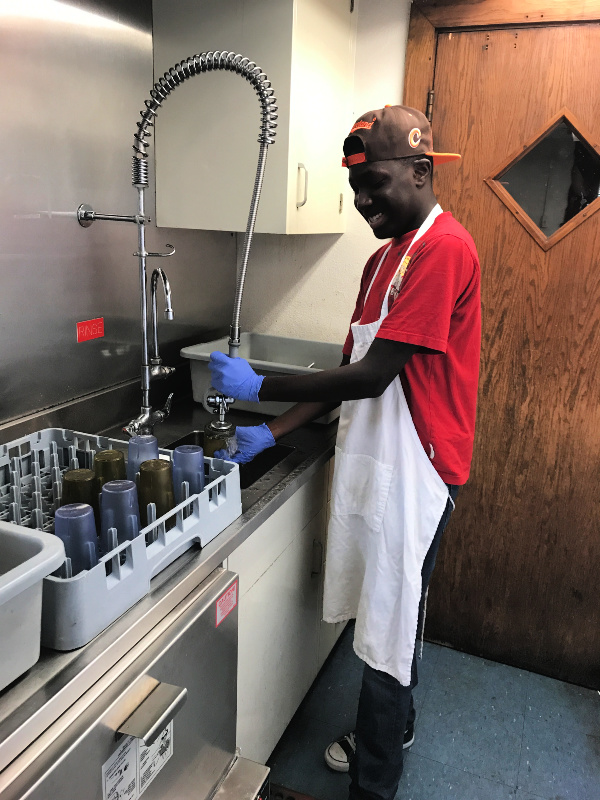Latest News
More Than Just Lunch

No one is at their best when they are hungry.
In our tristate region, one in seven people is food insecure. Many of our IKRON participants are among that number--unsure of where their next meal will come from. For many of our participants, the meals we provide at IKRON (breakfast, lunch, and a snack) are the only meals they have.
But while making sure our participants have adequate nutrition while addressing their employment barriers is a critical part of helping people attain self-sufficiency, our food service department does so much more than meet basic needs. It's a training ground for future employment.
IKRON's kitchen gives participants the full experience of working in a restaurant or cafeteria setting. Participants who wish to receive food service training take part in prep, cooking, serving, dishwashing, sanitizing, and other routine food service tasks. IKRON teaches knife skills, cooking skills, nutrition information, and ServSafe classes that can lead to valuable certification. Several students have gone on to obtain culinary degrees or more intensive training and certifications in food services.
We're committed to getting our participants the tools they need to succeed, whether that means making sure they have food so they can concentrate on meeting their goals, or training to get their foot in the door in food service. Will you help us make sure the IKRON kitchen remains one of our valuable services?
Here are some ways you can help:
- $10 - feeds two participants for one day
- $25 - feeds one participant for one week
- $100 - feeds one participant for one month
- $150 - provides one day of food service training
Every dollar of your donation to IKRON's food service keeps a participant nourished and focused on learning all they can, so they can get employed, graduate from IKRON, and lead a more fulfilling life. Will you partner with our participants today as they work hard to reach their dreams? Donate to IKRON's food service today.
Edit: this article has been updated 8-20-20 to reflect current food insecurity rates in the Greater Cincinnati area.
